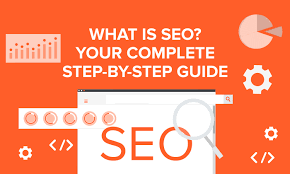
The Road Helmet: Essential Protection for Every Rider
When it comes to motorcycling, safety should always be a top priority. One crucial piece of protective gear that no rider should ever be without is the road helmet. Designed to provide maximum protection in the event of an accident, a road helmet is an essential investment for every rider.
The primary function of a road helmet is to protect the rider’s head from impact and reduce the risk of serious head injuries. It acts as a barrier between the skull and any external objects that may come into contact during a collision or fall. The hard outer shell of the helmet absorbs and distributes the force of impact, while the inner foam lining cushions and protects the head.
Road helmets are engineered with advanced technologies and materials to ensure optimal safety. They undergo rigorous testing procedures to meet stringent safety standards set by regulatory bodies. This ensures that riders can have confidence in their helmets’ ability to offer reliable protection.
In addition to its protective features, a road helmet also offers several other benefits. Many modern helmets are designed with aerodynamics in mind, reducing wind resistance and enhancing stability at high speeds. This not only improves comfort but also contributes to overall riding performance.
Furthermore, road helmets often incorporate ventilation systems that allow air to flow through the helmet, keeping riders cool and preventing discomfort caused by excessive heat buildup during long rides. Some helmets even come equipped with removable liners that can be washed, ensuring hygiene and freshness after extended use.
When choosing a road helmet, it is crucial to find one that fits properly. Ill-fitting helmets can compromise both comfort and safety. To determine your correct size, measure your head circumference using a flexible tape measure just above your eyebrows. Try on different models from reputable brands and make sure the helmet snugly fits your head without any uncomfortable pressure points.
It’s worth noting that road helmets should be replaced every few years or after any significant impact or crash, even if there are no visible signs of damage. Over time, the materials can degrade, compromising the helmet’s structural integrity and reducing its effectiveness in protecting the rider.
In conclusion, a road helmet is an essential piece of gear for every rider. It offers vital protection to the head in case of accidents and helps prevent serious injuries. With advancements in technology and design, modern road helmets provide comfort, aerodynamics, and ventilation features to enhance the overall riding experience. Remember to choose a helmet that fits properly and replace it as needed to ensure optimal safety on the road. Stay protected, ride responsibly, and enjoy your motorcycling adventures with peace of mind.
Advantages of Road Helmets: Enhancing Visibility, Aerodynamics, Lightweight Design, Ventilation, and Impact Protection
- Increased visibility
- Improved aerodynamics
- Lightweight construction
- Ventilation
- Protection against impacts
7 Downsides of Road Helmets: A Comprehensive Review
- Uncomfortable to wear – Road helmets are often tight and uncomfortable to wear, especially in hot weather.
- Limited visibility – The shape of road helmets can limit peripheral vision and make it harder to see what’s going on around you.
- Expensive – Road helmets can be quite expensive, particularly if you want a good quality one with the latest safety features.
- Bulky – Road helmets are usually quite bulky and can be hard to store when not in use or transport when travelling away from home.
- Noisy – Some road helmets can be noisy due to air turbulence created by the helmet’s shape or design, which can be distracting for riders and other road users alike.
- Not suitable for all activities – While they are great for cycling on roads, they may not provide enough protection for more extreme activities such as mountain biking or BMXing where a full-face helmet is usually recommended instead.
- Restrictive ventilation – Some cheaper models of road helmet don’t offer adequate ventilation which can lead to an uncomfortable ride in hot weather due to a build-up of sweat inside the helmet
Increased visibility
Increased Visibility: Enhancing Safety on the Road with a Road Helmet
When it comes to cycling, safety should always be a top priority. One significant advantage of wearing a road helmet is the increased visibility it provides to cyclists. With their bright colours and reflective strips, road helmets help cyclists stand out more in traffic, making them more visible to other road users.
In today’s busy roads, visibility plays a crucial role in preventing accidents. By wearing a road helmet with vibrant colours such as fluorescent yellow, orange, or even white, cyclists can instantly catch the attention of drivers and pedestrians alike. These eye-catching hues create contrast against the surrounding environment and make cyclists easily distinguishable from their surroundings.
Furthermore, many road helmets are equipped with reflective strips or decals strategically placed on the helmet’s surface. These reflective elements enhance visibility during low-light conditions or at night when visibility is significantly reduced. When illuminated by headlights or streetlights, these reflective features reflect light back towards its source, making the cyclist highly visible from various angles.
The increased visibility offered by road helmets can significantly reduce the risk of accidents caused by other road users failing to see or notice cyclists. It provides an added layer of safety for riders when navigating through busy intersections, roundabouts, or during lane changes on multi-lane roads.
It’s important to note that while a road helmet can enhance visibility, it should never be relied upon as the sole means of being seen on the road. Cyclists should also employ additional safety measures such as wearing high-visibility clothing and using bike lights to further increase their visibility to others.
In conclusion, wearing a road helmet not only protects cyclists’ heads but also enhances their overall safety on the road through increased visibility. The bright colours and reflective strips make cyclists stand out in traffic and help other road users notice them more easily. However, it’s essential for cyclists to remember that a road helmet is just one component of ensuring their safety. By combining it with other visibility-enhancing measures, cyclists can enjoy a safer and more confident riding experience. Stay visible, ride responsibly, and make every journey a safe one.
Improved aerodynamics
Improved Aerodynamics: Enhancing Your Speed and Performance
When it comes to cycling at high speeds, every rider knows that reducing drag is crucial for achieving optimal performance. That’s where the road helmet steps in, offering improved aerodynamics to help you cut through the wind and reach new levels of speed.
Road helmets are specifically designed with aerodynamics in mind. The streamlined shape and sleek contours are carefully crafted to minimize air resistance, allowing you to slice through the wind with greater efficiency. This reduction in drag not only enhances your speed but also contributes to better overall performance on the road.
By reducing the amount of air turbulence around your head, a road helmet helps you maintain stability even at high velocities. This means you can focus more on your ride without being distracted by excessive wind noise or buffeting. The improved aerodynamics create a smoother, more enjoyable cycling experience.
Not only do road helmets improve your speed and stability, but they also contribute to energy conservation. With less resistance from the wind, you can maintain your momentum more easily and expend less energy while riding. This allows you to ride longer distances or push yourself further without feeling as fatigued.
It’s important to note that improved aerodynamics doesn’t mean sacrificing comfort or safety. Road helmets are still constructed with the same protective features as any other helmet, ensuring your head remains well-protected in case of an accident or impact.
When choosing a road helmet for its aerodynamic benefits, consider factors such as shape, vents placement, and overall design. Look for models that have been tested and optimized for aerodynamic performance by reputable manufacturers.
Remember that while improved aerodynamics can enhance your cycling experience, it’s essential to always prioritize safety above all else. Wear a properly fitting helmet that meets safety standards and replace it if it has been involved in any accidents or shows signs of damage.
In conclusion, a road helmet’s improved aerodynamics can make a significant difference in your cycling performance, particularly at high speeds. With reduced drag and enhanced stability, you can enjoy faster rides while conserving energy. Just remember to always prioritize safety and choose a helmet that offers both aerodynamic benefits and reliable protection. So, gear up, embrace the wind, and enjoy the exhilaration of cycling with an aerodynamically optimized road helmet.
Lightweight construction
The Advantage of Lightweight Construction in Road Helmets
When it comes to choosing the right road helmet, one of the key advantages to consider is its lightweight construction. Road helmets are typically crafted from materials such as polycarbonate or carbon fibre, which offer a range of benefits for riders.
The use of lightweight materials in road helmets ensures that they are comfortable to wear for extended periods without causing undue strain on the head and neck. This is particularly important for riders who embark on long journeys or engage in endurance rides. The reduced weight of the helmet allows for better comfort and minimizes fatigue, enabling riders to focus on the road ahead.
Furthermore, a lightweight road helmet enhances overall agility and maneuverability while riding. The lighter weight reduces any feeling of bulkiness or restriction, allowing riders to maintain a natural range of motion and easily check blind spots when necessary. This can greatly contribute to rider confidence and safety on the road.
In addition to comfort and agility, lightweight construction also plays a role in ventilation. Many road helmets incorporate well-designed airflow systems that work optimally when the helmet is not excessively heavy. These ventilation systems help regulate temperature by allowing cool air to circulate around the head, preventing discomfort caused by excessive heat buildup during rides.
It’s worth noting that while lightweight construction is advantageous, it should never compromise safety. Road helmets undergo rigorous testing procedures to ensure they meet stringent safety standards despite their reduced weight. Manufacturers carefully balance weight reduction with structural integrity and impact resistance to provide optimal protection for riders.
When selecting a road helmet based on its lightweight construction, it’s important to consider other factors as well, such as proper fit and certification standards. A well-fitting helmet that meets safety regulations will provide maximum protection while still being lightweight.
In conclusion, the use of lightweight materials in road helmets offers significant advantages for riders. The comfort provided by these helmets allows for extended wear without strain or fatigue. Their reduced weight contributes to better agility and maneuverability, enhancing overall rider confidence and safety. Additionally, the ventilation systems in lightweight helmets help regulate temperature, ensuring a comfortable ride. When choosing a road helmet, always prioritize safety and ensure it meets necessary certification standards. Ride with peace of mind, knowing you have a lightweight helmet that offers both protection and comfort on the road.
Ventilation
Ventilation: Stay Cool and Comfortable with a Road Helmet
When it comes to road cycling, comfort is key. And one of the standout features of a road helmet is its excellent ventilation system. Designed with multiple vents strategically placed throughout the helmet, this feature allows air to circulate around the cyclist’s head, keeping them cool and comfortable during those long rides.
As any cyclist knows, riding under the scorching sun or in hot weather can quickly lead to discomfort and excessive sweating. This is where the ventilation system of a road helmet truly shines. The carefully positioned vents create a flow of air that helps regulate temperature and prevent overheating.
The constant circulation of air not only keeps the cyclist cool but also helps to wick away moisture, reducing sweat buildup. This not only enhances comfort but also minimizes the risk of skin irritation or chafing that can occur during prolonged rides.
Furthermore, proper airflow provided by the ventilation system can help prevent fogging on glasses or goggles worn by cyclists. By allowing fresh air to pass through the helmet, it reduces condensation build-up and ensures clear vision throughout the ride.
Road helmets are designed with aerodynamics in mind, ensuring that ventilation doesn’t compromise speed or performance. The vents are strategically placed to minimize wind resistance while still allowing ample airflow. This means that cyclists can enjoy both comfort and optimal performance without compromising one for the other.
It’s worth noting that different road helmets may have varying numbers and sizes of vents, depending on their specific design and intended use. Some helmets even offer adjustable vent systems, allowing riders to customize their level of airflow based on personal preference or weather conditions.
When choosing a road helmet, consider your typical riding conditions and climate. If you often cycle in hot weather or participate in intense rides where heat build-up is a concern, prioritize helmets with generous ventilation systems for maximum cooling effect.
In conclusion, ventilation is a significant advantage offered by road helmets. The multiple vents strategically placed throughout the helmet allow air to circulate, keeping cyclists cool, comfortable, and focused on their ride. With proper airflow, riders can say goodbye to excessive sweating and fogged-up eyewear. So, invest in a quality road helmet with excellent ventilation and enjoy your cycling adventures with a refreshing breeze on your head.
Protection against impacts
Protection against impacts: A Lifesaving Feature of Road Helmets
When it comes to riding motorcycles, safety is paramount. One of the most critical advantages of a road helmet is its ability to protect against severe head injuries in the event of an accident or collision. This lifesaving feature cannot be overstated.
Road helmets are specifically designed to absorb impact energy and distribute it over a larger area of the skull. The hard outer shell of the helmet acts as a shield, reducing the force of impact and minimizing the risk of skull fractures or traumatic brain injuries.
Inside the helmet, a foam lining made from materials such as expanded polystyrene (EPS) provides an additional layer of protection. This foam is designed to compress upon impact, absorbing and dissipating energy before it reaches the head. By spreading out the force over a larger area, a road helmet can significantly reduce the likelihood and severity of head injuries.
The importance of this protection cannot be emphasized enough. Head injuries can have devastating consequences, affecting not only physical well-being but also cognitive functions and quality of life. Wearing a road helmet significantly decreases the risk of such injuries, providing riders with peace of mind and confidence on their journeys.
It’s crucial to choose a road helmet that meets safety standards set by regulatory bodies. Look for certifications such as DOT (Department of Transportation) or ECE (Economic Commission for Europe) labels, which indicate that the helmet has undergone rigorous testing and meets specific safety requirements.
Remember that wearing a road helmet is not just about complying with legal obligations; it’s about prioritizing personal safety and well-being. Even for short rides or at lower speeds, accidents can happen unexpectedly. Investing in a high-quality road helmet is an investment in your own protection.
So, whether you’re a seasoned rider or just starting out on your motorcycling journey, always remember to wear your road helmet. Its ability to absorb impact energy and spread it over a larger area of the skull can make a significant difference in preventing severe head injuries. Prioritize your safety, enjoy the ride, and keep exploring the open road with peace of mind.
Uncomfortable to wear – Road helmets are often tight and uncomfortable to wear, especially in hot weather.
Uncomfortable to Wear: Addressing a Common Con of Road Helmets
Road helmets play a vital role in protecting motorcyclists on the road, but it’s important to acknowledge that they can sometimes be uncomfortable to wear, particularly in hot weather. While this is a valid concern, advancements in helmet design have aimed to address this issue and improve overall comfort.
One of the main reasons road helmets can feel tight or uncomfortable is because they need to fit securely on the head to provide effective protection. This snug fit ensures that the helmet stays in place during an impact, reducing the risk of it coming off and leaving the rider vulnerable. However, this close fit can sometimes lead to discomfort, especially for those with sensitive skin or who are not accustomed to wearing helmets.
Fortunately, helmet manufacturers have recognized this challenge and have made significant efforts to enhance comfort without compromising safety. Many modern road helmets incorporate features such as adjustable straps and padding systems that allow riders to customize the fit according to their preferences. These adjustments help alleviate pressure points and provide a more comfortable experience.
Additionally, advancements in ventilation systems have greatly improved airflow within helmets. Strategically placed vents allow cool air to enter while expelling warm air, helping regulate temperature and reduce discomfort caused by excessive heat buildup. Riders can now find helmets specifically designed for hot weather riding, with increased ventilation and moisture-wicking materials that keep them cool and dry even in scorching conditions.
It’s worth noting that finding the right helmet for individual comfort may require some trial and error. Different brands and models may have slightly different fits, so it’s essential for riders to try on various options before making a final decision. Visiting reputable motorcycle gear stores or consulting with knowledgeable professionals can also provide valuable guidance in selecting a comfortable helmet.
Ultimately, while it is true that road helmets can be uncomfortable at times, especially in hot weather conditions, it is crucial not to compromise safety for comfort alone. The discomfort experienced from wearing a helmet is temporary, whereas the protection it provides is invaluable and can prevent life-changing injuries.
It’s essential for riders to prioritize safety and ensure they have a properly fitting helmet that meets safety standards. By exploring different options, considering comfort-enhancing features, and seeking expert advice, riders can find a road helmet that strikes the right balance between protection and comfort, allowing them to enjoy their rides with peace of mind.
Limited visibility – The shape of road helmets can limit peripheral vision and make it harder to see what’s going on around you.
Limited Visibility: A Con to Consider with Road Helmets
While road helmets are undoubtedly crucial for rider safety, it is essential to acknowledge that they do come with a potential downside: limited visibility. The shape and design of road helmets can restrict peripheral vision, making it harder for riders to see what’s happening around them.
One of the primary purposes of a road helmet is to provide maximum protection to the head, which often means incorporating a full-face design. This design covers the entire face, including the sides, and may result in reduced peripheral vision. Riders may find it challenging to see objects or vehicles approaching from their sides without turning their heads significantly.
This limitation in visibility can be particularly problematic in situations that require quick reactions or when navigating through heavy traffic. Being aware of one’s surroundings is crucial for anticipating potential hazards and making safe riding decisions. Limited peripheral vision can hinder a rider’s ability to assess their environment effectively.
However, it is important to note that advancements in helmet technology have led to improvements in this area. Some road helmets now feature wider visors or enhanced peripheral vision designs, aiming to mitigate this con. Riders should explore different helmet options and consult knowledgeable professionals who can guide them towards models that prioritize both safety and visibility.
Additionally, riders can compensate for limited peripheral vision by adopting defensive riding techniques and being extra vigilant on the road. Regularly checking blind spots by turning your head before changing lanes or making turns becomes even more critical when wearing a road helmet.
Ultimately, while limited visibility remains a con associated with road helmets, it should not overshadow the undeniable benefits they provide in terms of head protection during accidents or falls. With proper awareness and precautions, riders can navigate this challenge effectively and continue enjoying their passion for motorcycling while prioritizing safety.
Remember, choosing the right helmet that fits well and offers optimal protection should always be the primary consideration. By weighing the pros and cons and taking necessary precautions on the road, riders can strike a balance between safety and visibility, ensuring a safer and more enjoyable riding experience.
Expensive – Road helmets can be quite expensive, particularly if you want a good quality one with the latest safety features.
Expensive – A Consideration When Choosing a Road Helmet
When it comes to purchasing a road helmet, one aspect that riders often consider is the cost. It’s no secret that road helmets can be quite expensive, especially if you’re looking for a high-quality one with the latest safety features. While the price tag may seem daunting, it’s important to understand the reasons behind the higher cost.
First and foremost, road helmets undergo extensive research and development to ensure they meet strict safety standards. Manufacturers invest significant resources in designing helmets that provide optimal protection in various impact scenarios. This includes incorporating advanced materials, such as carbon fiber or reinforced polycarbonate, which offer superior strength and impact resistance.
Additionally, road helmets often come equipped with cutting-edge technologies aimed at enhancing safety. These can include features like MIPS (Multi-directional Impact Protection System), which helps reduce rotational forces during an impact, or integrated communication systems for improved rider connectivity on the road.
Moreover, the manufacturing process of road helmets involves meticulous attention to detail and quality control measures. Each helmet undergoes rigorous testing procedures to ensure its ability to withstand impacts and protect the rider effectively. This level of precision adds to the overall cost of production.
While it’s true that road helmets can be expensive, it’s essential to consider their value in terms of protection and peace of mind. Investing in a good quality helmet means prioritizing your safety on the road. It is an investment that can potentially save your life or prevent severe head injuries in case of an accident.
However, it’s important not to compromise on quality solely based on price. Cheaper alternatives may not offer the same level of protection or durability as higher-priced options. It’s always advisable to choose a reputable brand known for its commitment to safety standards and customer satisfaction.
To make purchasing a road helmet more affordable, riders can look out for sales or discounts offered by retailers or manufacturers. Additionally, considering previous years’ models or opting for helmets without additional features can help reduce costs while still maintaining a high level of safety.
In conclusion, the expense associated with road helmets is a valid consideration for riders. However, it’s crucial to remember that the cost reflects the investment made in research, development, and manufacturing processes to ensure optimum safety. Prioritizing your well-being on the road by choosing a good quality helmet is a decision that should not be taken lightly. Remember, your safety is worth every penny spent.
Bulky – Road helmets are usually quite bulky and can be hard to store when not in use or transport when travelling away from home.
The Bulky Conundrum: Road Helmets and Storage Challenges
While road helmets are undoubtedly crucial for rider safety, one common drawback often mentioned is their bulkiness. Road helmets tend to be larger in size compared to other types of helmets, which can pose challenges when it comes to storage and transportation.
The robust construction and protective features that make road helmets so effective in safeguarding riders also contribute to their bulkiness. The hard outer shell, impact-absorbing foam lining, and additional safety components all contribute to the helmet’s size and weight. This can make finding a suitable storage solution a bit more challenging.
For riders who live in smaller living spaces or have limited storage options, finding a dedicated spot for their road helmet can be tricky. The bulky nature of the helmet may not fit easily into compact storage compartments or shelves. As a result, riders may find themselves struggling to find a convenient place to keep their helmet when it’s not in use.
Additionally, the size of road helmets can also pose challenges when travelling away from home. Whether you’re embarking on a long-distance ride or simply transporting your helmet on public transport, the bulkiness becomes evident. Carrying a large helmet around can be cumbersome and inconvenient, especially if you have limited space or need to store it securely during transit.
Despite these challenges, there are solutions available to help overcome the bulky conundrum of road helmets. Many manufacturers now offer collapsible or modular designs that allow for easier storage and transportation. These innovative designs incorporate features such as removable chin bars or folding mechanisms that reduce the overall size of the helmet when not in use.
Furthermore, investing in dedicated helmet bags or cases can provide added convenience and protection while storing or transporting your road helmet. These accessories are often designed with padded interiors and sturdy exteriors to safeguard your helmet from damage while keeping it secure during travel.
It’s important to remember that while road helmets may be bulky, their primary purpose is to provide essential protection for riders. The inconvenience of storage and transportation should not overshadow the critical role they play in ensuring rider safety on the road.
In conclusion, the bulkiness of road helmets can present challenges when it comes to storage and transportation. However, with advancements in design and the availability of dedicated accessories, riders can find solutions to mitigate these inconveniences. It’s crucial to prioritize safety above all else and ensure that your road helmet is stored securely when not in use and transported safely during travel. By doing so, you can enjoy the peace of mind that comes with knowing you’re well-protected on your motorcycling journeys.
Noisy – Some road helmets can be noisy due to air turbulence created by the helmet’s shape or design, which can be distracting for riders and other road users alike.
The Noisy Conundrum: Dealing with Noise in Road Helmets
While road helmets are an essential piece of protective gear for riders, it’s important to acknowledge that they do come with a few drawbacks. One notable con that some riders may encounter is the issue of noise. Certain road helmets can be noisy, creating air turbulence and causing distractions for both the rider and other road users.
The noise factor in road helmets primarily stems from the helmet’s shape or design. As riders zoom through the open roads, the airflow around the helmet can create turbulence, resulting in whistling sounds or excessive wind noise. This can be particularly bothersome during high-speed rides or windy conditions.
The distracting nature of a noisy helmet can affect a rider’s concentration and overall riding experience. It may hinder communication with fellow riders or make it difficult to hear important auditory cues from the surroundings, such as approaching vehicles or sirens. Additionally, prolonged exposure to loud noise can contribute to rider fatigue and potentially impact hearing over time.
Fortunately, there are ways to mitigate this issue. Many helmet manufacturers have recognized the importance of reducing noise levels and have implemented various design features to address this concern. These include aerodynamic enhancements, improved ventilation systems, and strategically placed padding or insulation to minimize wind noise.
When selecting a road helmet, consider models that prioritize noise reduction features. Look for helmets with streamlined designs that minimize drag and turbulence. Opt for helmets with adjustable vents that allow you to control airflow and reduce wind noise while still maintaining proper ventilation.
Additionally, some riders choose to wear earplugs specifically designed for motorcycling. These earplugs effectively reduce wind noise while still allowing important sounds like sirens or honks to be heard clearly. It’s crucial to select earplugs that offer adequate protection without compromising situational awareness on the road.
It’s worth noting that individual preferences for helmet noise levels may vary among riders. Some may find certain levels of noise acceptable or even enjoy the sense of freedom it brings. However, for those who find excessive noise bothersome, exploring helmets with noise reduction features or utilizing earplugs can significantly enhance the riding experience.
In conclusion, while some road helmets may be noisy due to air turbulence created by their design, there are solutions available to address this issue. Manufacturers have made strides in reducing wind noise through aerodynamic enhancements and improved ventilation systems. Additionally, riders can consider wearing earplugs specifically designed for motorcycling to further reduce noise levels. By selecting helmets that prioritize noise reduction features and taking proactive measures, riders can enjoy a quieter and more comfortable ride on the open road.
Not suitable for all activities – While they are great for cycling on roads, they may not provide enough protection for more extreme activities such as mountain biking or BMXing where a full-face helmet is usually recommended instead.
Not suitable for all activities – Road helmets excel in providing protection and safety for cyclists on the road. However, it is important to note that they may not be the best choice for more extreme activities such as mountain biking or BMXing. In these situations, a full-face helmet is usually recommended instead.
The main difference between a road helmet and a full-face helmet lies in their coverage and design. Road helmets are primarily designed to protect the head from impacts that occur during road cycling accidents, where the risk of collisions with vehicles is higher. They typically feature an open-face design, providing ventilation and allowing riders to have clear visibility.
On the other hand, extreme activities like mountain biking or BMXing involve higher speeds, rough terrains, and jumps that pose additional risks. In these situations, riders need enhanced protection not only for their heads but also for their faces, jaws, and chin areas. This is where a full-face helmet comes into play.
Full-face helmets provide extended coverage by incorporating a protective chin guard along with the traditional head protection. This additional feature offers increased safety by shielding riders from potential facial injuries during high-impact crashes or falls. The robust construction of full-face helmets ensures maximum protection in more challenging environments.
While road helmets are lightweight and offer better ventilation for long rides on paved roads, they may not provide sufficient protection in scenarios where riders face more extreme challenges. It’s essential to assess the specific requirements of your chosen activity and select the appropriate helmet accordingly.
Remember that safety should always be a priority when participating in any activity involving two wheels. Consult with experts or experienced riders to determine which type of helmet suits your needs best. Whether it’s road cycling or engaging in adrenaline-fueled off-road adventures, choosing the right helmet will help ensure you can enjoy your chosen activity with confidence and peace of mind.
Restrictive ventilation – Some cheaper models of road helmet don’t offer adequate ventilation which can lead to an uncomfortable ride in hot weather due to a build-up of sweat inside the helmet
The Con of Road Helmets: Restrictive Ventilation
While road helmets are an essential piece of protective gear for riders, it’s important to consider their potential drawbacks. One common con, particularly in cheaper models, is the issue of restrictive ventilation. Insufficient airflow can lead to discomfort during hot weather rides, as sweat accumulates inside the helmet.
Ventilation plays a crucial role in maintaining rider comfort by allowing air to circulate within the helmet. It helps dissipate heat and moisture, keeping the head cool and dry. However, some lower-priced road helmets may not prioritize adequate ventilation, leading to an uncomfortable experience for riders in warmer climates or during intense rides.
When ventilation is lacking, riders may experience excessive sweating and a build-up of moisture inside the helmet. This can cause discomfort, skin irritation, and even fogging on the visor, impairing visibility while riding. The accumulation of sweat can also create an unpleasant odor over time if not properly addressed.
To mitigate this issue, it is advisable to invest in a higher-quality road helmet that prioritizes effective ventilation. Reputable brands often incorporate advanced airflow systems into their designs, ensuring proper air circulation and heat dissipation. These helmets usually feature strategically placed vents that allow fresh air to enter while expelling warm air from the rear.
Additionally, some road helmets offer adjustable venting systems that allow riders to control airflow based on personal preferences or weather conditions. This feature enables riders to adapt their helmet’s ventilation according to different riding environments or temperature fluctuations.
Regular maintenance is also crucial for optimizing ventilation in any road helmet. Keeping vents clean and free from debris ensures unobstructed airflow and prevents any blockages that could compromise cooling efficiency.
While restrictive ventilation can be a downside of certain cheaper road helmets, it’s important to remember that investing in a high-quality helmet will likely provide better comfort and performance overall. Prioritizing proper ventilation can significantly enhance your riding experience, especially during hot weather conditions.
In conclusion, the con of restrictive ventilation in some cheaper road helmets can lead to discomfort and excessive sweating during hot weather rides. However, by investing in a higher-quality helmet that prioritizes effective airflow and considering adjustable venting systems, riders can mitigate this issue and enjoy a more comfortable and enjoyable ride. Remember to prioritize ventilation when selecting your road helmet to ensure optimal comfort and safety on the road.









